Potato is one of the superfoods that make up a dominant part of our diet. This starchy tuber vegetable is included in the majority of cuisines around the world and is very well-known for its super taste and high nutrient profile. Moreover, this simple and down-to-earth vegetable comes in a variety of types, one of which is the talk of this article.
Well, we’re talking about sweet potatoes!
Loaded with lots of essential nutrients, a sweet taste, and an exceptionally soft texture, sweet potatoes are a wonderful choice to include in your dishes. However, if you don’t like it or can’t access them at the moment, we’ve got a solution for you.
This article is all about the best substitutes for sweet potatoes. It provides you with some wonderful options that won’t make you compromise on the flavor and texture of your food in the absence of sweet potatoes.
So, let’s begin!
What are sweet potatoes?
Sweet potatoes are a superfood that provides an abundance of important nutrients. They are a kind of root vegetable that is frequently consumed during the holidays.
Long and thin with smooth, reddish-brown skin, sweet potatoes can be prepared in a variety of ways. They can be roasted, mashed, or even cooked into pies. All thanks to their versatility.
Sweet potatoes are naturally loaded with vitamins and minerals including Vitamin A, Vitamin C, Potassium, and Manganese. They provide a large amount of fiber as well.
As they have a low fat and calorie content, sweet potatoes are a good option for those attempting to lose weight and keep it off!
The best substitutes for sweet potatoes
Here is a list of some of the finest fruits and vegetables that you can look up to replicate the taste and flavor of sweet potatoes! Let’s get to it.
#1 Plantains
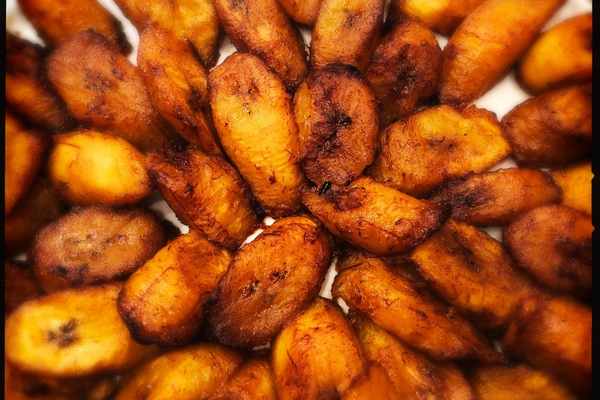
The first substitute on our list is cooking bananas! Yes, the plantains.
Given their neutral flavor and texture, plantains are prepared similarly to normal potatoes as a staple food in the tropics. They make a fantastic side dish, with a popping texture and flavor when steamed, baked, fried, or grilled.
The ripe plantains are highly sweet, although the green ones have a moderate flavor. It is because they are starchier and less sweet when they are green, but as they ripen, turning from yellow to black, they gradually get sweeter and more syrupy.
In terms of calories, cooked plantains are relatively similar to conventional potatoes but have a higher concentration of some vitamins and minerals.
Nutritionally, plantains are a good source of fiber, magnesium, potassium, and vitamins A, C, and B-6 and are considered equally healthy as sweet potatoes. For more information take a look at: The benefits of plantains.
#2 Acorn Squash
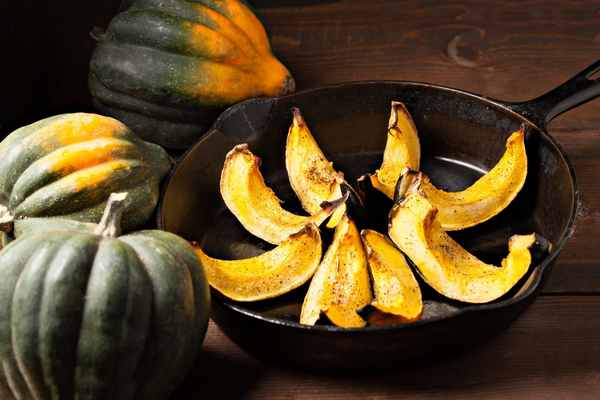
Next on the list is the Acorn squash. This versatile squash can be used in pies as well as baked, mashed, roasted, steamed, and grilled dishes. A perfect fit in place of sweet potatoes.
Acorn squashes are sometimes stuffed with rice, veggies, and meat. If a sweeter meal is required, maple syrup is frequently added to flavor the squash before baking. You can also consume the squash seeds after lightly roasting them. Lastly, you may make squash soup with acorn squash.
What is even great is that these squashes are easily available in supermarkets so you don’t have to search for them hard. Therefore, feel free to modify your recipes if you’re sick of sweet potato dishes and want to try something new.
With a brilliantly yellow interior and a green outside, acorn squashes are rich in fiber, vitamin C, potassium, and magnesium along with antioxidant carotenoid components. Thus, they are not only good for taste but boast of nutrients too!
#3 Pumpkins

Here we have the most popular rich orange-colored squash called the pumpkin.
The texture of pumpkin is creamier than that of sweet potatoes but its flavor may not be that sweet. However, they can still be used in place of sweet potatoes in a variety of recipes, such as side dishes, stews, sweets, preserves, and soups.
Additionally, pumpkin has few calories but is high in vitamins and minerals, which are also found in the fruit’s seeds, leaves, and liquids. Among other things, pumpkin contains proteins, fiber, vitamins (B6, C, E, and K), potassium, iron, and thiamin.
So, it can serve a healthy meal when sweet potatoes aren’t around!
#4 Yams
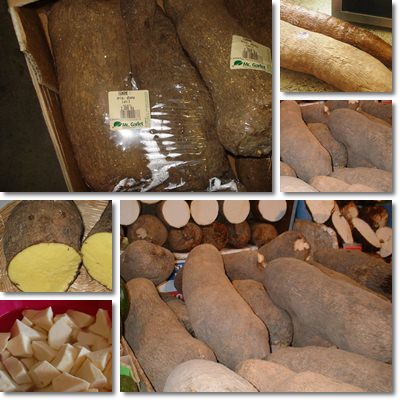
Yams are a particular variety of vegetable tuber that have their roots in Asia, the Caribbean, and Africa. They are frequently confused for sweet potatoes but are usually starchier and less sweet.
You can bake, roast, boil, fry, steam, or pan-cook these delectable tubers and use them in various sweet and savory recipes. Be it with or without the skin, yams can offer a delicious treat to you!
Their exterior is a distinctive brown bark-like color. However, the flesh can be white, yellow, purple, or pink. It all depends on the yam’s maturity.
The rich nutrient profile of the tuber includes vitamins, minerals, and fiber. The minerals potassium, manganese, copper, and vitamin C are especially abundant in them.
#5 Spaghetti Squash
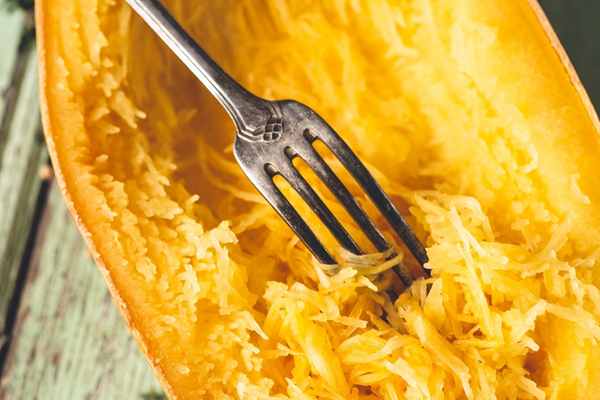
Another well-liked squash species that serves as a delicious substitute for sweet potatoes is the spaghetti squash. It is a perfect fit for salads, soups, and casseroles!
Spaghetti squash has vivid golden skin, and the flesh is much whiter. It can be cooked in a variety of ways, but the most common ones include baking, roasting, and steaming. When cooked, spaghetti squash has a distinctive stringy texture and a mild flavor.
Although low in calories, spaghetti squash is a good source of fiber, vitamin B6, antioxidants, and other nutrients.
#6 Celery Root

This is the most nutritious substitute on our list!
Celery root is a versatile root vegetable that can replace potatoes in a nutritious mash and is used in stews, soups, salads, and other dishes. It can also be added raw to salads for a crisp, nutty flavor. However, when cooked, celery root takes on a sweet flavor like that of sweet potatoes.
The celery root resembles a rounded bulb and has a bulbous hypocotyl with numerous tiny roots attached.
Being a nutritional powerhouse, celety is a rich source of fiber and the vitamins B6, C, and K. Antioxidants and essential minerals like phosphorus, potassium, and manganese are also abundant in it. See more: celery benefits
#7 Cassava
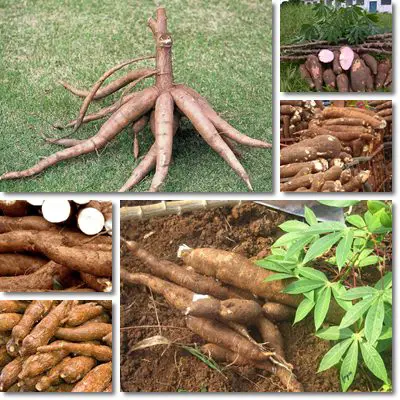
If you are looking for a perfect replacement for sweet potatoes in chips and soups, go for cassava!
Cassava is sometimes referred to as yuca, manioc, or Brazilian arrowroot in the United States. They can be used in place of sweet potatoes to make side dishes and taste particularly nice when boiling, in soups, or as chips.
Similar to sweet potatoes, cassava is a tuber or root vegetable with a soft, stringy texture and nutty flavor. It has a lot of carbohydrates and only a little fiber, vitamins, and minerals. It is free of nuts, grains, and gluten.
One thing to keep in mind is that cassava root needs to be prepared before eating. They, when eaten raw, can be toxic!
#8 Parsnips
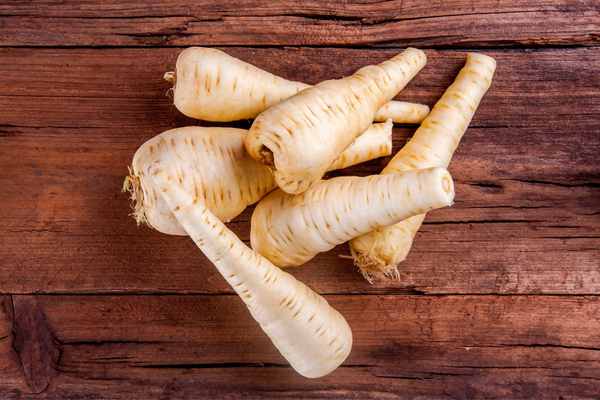
Another surprising but nutritious substitute on our list is parsnips. They have long, tuberous roots, and cream-colored skin and are a perfect fit to substitute for sweet potatoes!
However, if you want to experience the peak taste of parsnips, the best time to consume them is in January. It is because their flesh becomes much sweeter during the winter.
In general, parsnips have a sweeter flavor than carrots and a nuttier aftertaste. Parsnips can be eaten raw in salads or coleslaw, even though the majority of recipes call for cooked parsnips.
They are nicely abundant in vitamins, minerals, fiber, potassium, vitamin C, and phytonutrients. So, don’t worry about nutrition!
#9 Carrots
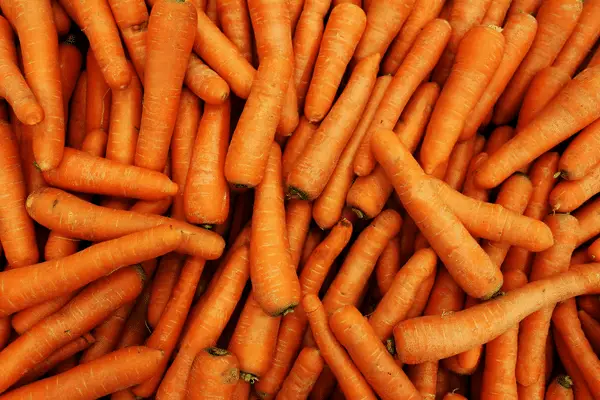
Carrots are typically pleasant and crunchy when eaten raw, and they can be shredded and added to a variety of salads for a more nutritious side dish.
This root vegetable is frequently hailed as the ideal health food. They are an excellent source of potassium, beta carotene, fiber, vitamin K1, and antioxidants
Besides a wonderful taste and rich nutrients, carrots come in a variety of colors, including yellow, white, orange, red, and purple, making them appealing to the eye. And this might deceive the finicky eater in your child. So, it will always be fun to replace sweet potatoes with them.
You can use roasted carrots if you want but when baked, they take on a concentrated sweet flavor with caramelized edges. So, the latter might be a better option to go for!
#10 Red Yam
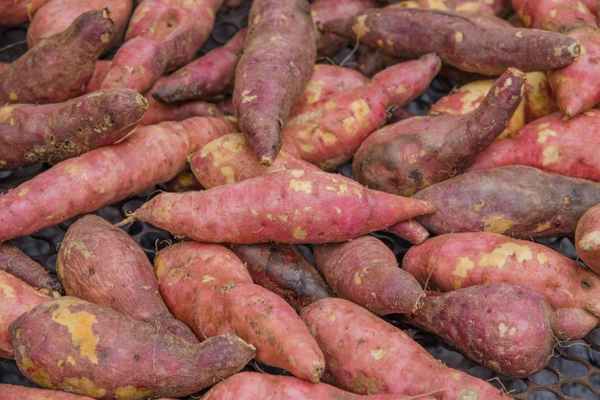
We had saved the nearest alternative for the end and here it is. The garnet potato or the red yam!
To avoid confusion with the white-fleshed sweet potatoes, garnet potatoes are marketed as “red yams.” So, if you can’t find garnet potatoes in your local grocery, search them as red yams and you’ll find them in no time!
When compared to using ordinary sweet potatoes, garnet can be used in practically every recipe and the same amount. Their flesh is described as being orange-yellow and mild reddish-purple in tone. They taste great but are a little bit sweeter than a typical sweet potato.
They are usually very rich in vitamin-A and E, calcium, iron, and fiber! Most importantly, they offer low calories so can be a part of your everyday meals!
